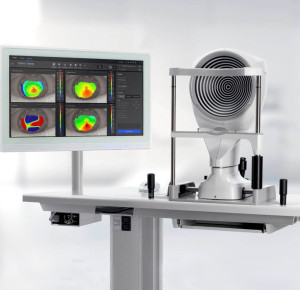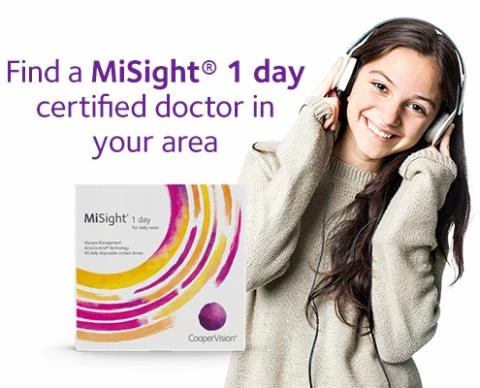Progressive Myopia is a significant and prevalent eye disease that is approaching epidemic proportions among children and young adults. Myopia is often referred to as being “near-sighted,” or “short-sighted,” which means light in the myopic eye focuses in front of, instead of on, the retina. Progressive Myopia may be understood as the disconnection between ocular power and the elongation (growth) of the eye over time.
Myopia is a vision defect of focus that makes distant objects appear blurry while objects close up appear clear and normal. This is due to an elongation of the eye over the time that often starts in childhood. The earlier a child develops myopia, the more likely they are to end up with a high minus prescription. Progressive myopia will have immediate impacts on a child’s school, sports and social performance. Although this refractive error can be corrected with glasses, contact lenses, and refractive surgery in much later years, there are risks associated with the development of these high prescriptions and the stretching of the retinal tissue of the eye over time. These risks include retinal detachment, myopic macular degeneration, neovascularization, and glaucoma.
SIGNS FOR PARENTS TO LOOK FOR
-
Does your child need to squint or partially close the eyelids to see clearly?
-
Is your child’s performance in school dropping?
-
If your child sits at the front of the classroom or moves very close to the screen, he or she probably has myopia.Treatment Options:
The good news is that there have been many research studies that have found ways to slow the progression of myopia in children. Treatment modalities include soft multifocal lenses like the FDA Approved CooperVision MiSight 1 Day, or low dose atropine drops, and gas permeable lenses known as Ortho-K lenses. It is important for your children to have regular eye exams to determine the onset and amount of myopia they may experience as they grow and develop.
One of the mechanisms behind myopia progression is light being focused behind the retina (the tissue in the back of the eye that captures light images) when we focus on objects up close (think tablets, phones, books, etc.). Specialty contact lenses and low dose atropine drops help move the focal point of peripheral light to in front of the retina, slowing down the process of myopia progression. Ask about myopia management options that might be a good fit for your child at their next eye exam.
Research indicates that these low concentrations of Atropine can reduce the rate at which myopia worsens, with minimal side effects compared to higher doses, which are associated with increased light sensitivity and blurred near vision. While low-dose atropine does not correct existing blurred vision and children still require glasses or contact lenses, it offers a promising pharmacological option to delay or lessen the severity of myopia progression, potentially reducing the risk of long-term vision complications.
Risk Factors:
- Genetic
- Environmental
- Education & Near Work
- Time Outdoors & Light Exposure
Syndromes with associated myopia are listed below.
Ocular Disease
- Congenital Glaucoma
- ROP
- RP
- Cataract
- CSNB
- Keratoconus
- Aland eye disease
- Gyrate Atropy
- Pseudomyopia
- Albinism
Multi-system disease
- Sticklers Syndrome
- Diabetes Mellitus (uncontrolled)
- Marfan
- Weill-Marchesani
- Knobloch
- Ehlers Danlos
Myopia Vision Simulator | CooperVision US
Fortunately, your age-appropriate children may benefit from an innovative technology to help slow down the progression of their myopia1*: MiSight® 1 day contact lenses from CooperVision. MiSight® 1 day contact lenses with ActivControl® Technology not only correct nearsightedness – they’re also the first soft contact lenses proven to slow the progression of myopia in children in children aged 8-12 at initiation of treatment.*1 When wearing MiSight® 1 day contact lenses, your age-appropriate child can experience clear vision, freedom from glasses and continue to enjoy the activities they love.



